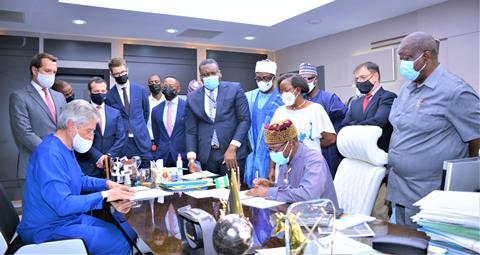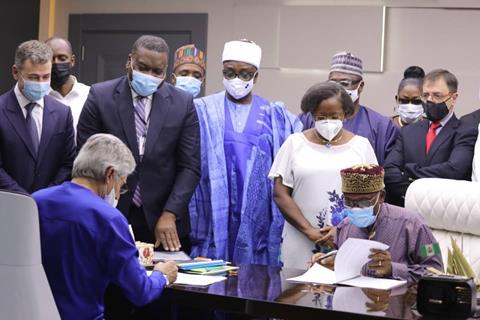
AFRICA: Construction of a long-planned rail link to landlocked Niger is set to go ahead, after Nigeria’s Federal Ministry of Transportation signed a memorandum of understanding with Portuguese company Mota-Engil to build a cross-border rail link from northern Nigeria.

Nigeria’s Transport Minister Chibuike Rotimi Amaechi formally signed the US$1·96bn contract with Mota-Engil Managing Director Antonio Gvoea at a ceremony on January 11. This covers the construction of two 1 435 mm gauge lines radiating from the northern city of Kano.
The main route would run northwest for 283·8 km to Maradi in southern Niger, via Dambarta, Kazaure, Daura and Katsina, crossing the border near Jibia. A 93 km branch would run southeast from Kano to Dutse, the capital of Jigawa state. There will be 12 new stations in total, and construction is due to take 32 months.

A US$2bn budget for the project was approved by Nigeria’s Federal Executive Council in September 2020. The scheme is part of a government plan to develop integrated rail and road networks across the country to address the poor transport infrastructure that has constrained economic growth. It would also aid reconstruction in northern areas which have suffered at the hands of paramilitary group Boko Haram in the past decade. Amaechi added that Mota-Engil had agreed to build a university in the region as part of the package.
The lines are intended to connect at Kano with a northern extension of the standard-gauge Abuja – Kaduna line which opened in July 2016. In the longer term, the region would also be linked to the coast by the construction of new lines linking Abuja with the recently-opened Itakpe – Warri railway and the Chinese-built line which will eventually replace the legacy 1 067 km Lagos – Ibadan – Kaduna – Kano main line.
- · Following presidential authorisation, Nigerian Railway Corp began trial commercial operation of the 156 km Lagos – Ibadan line on December 7, ahead of a formal commissioning in the first quarter of 2021.
Lagos to Ibadan Rail movement!!! Movement from Lagos to Ibadan and Ibadan to Lagos will now be seamless. pic.twitter.com/d3N4JpjYzX
— NIGERIAN RAILWAY CORPORATION (@Official_NRC) December 12, 2020

















